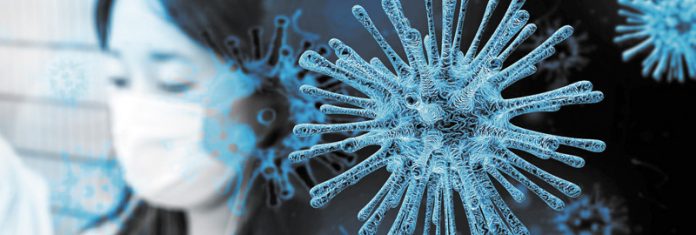
Everyone knows about the new Coronavirus which originated in China. Estimates vary, but it is supposed to have infected over 100,000 people worldwide so far, with over 4,000 deaths (the numbers change daily for both). We have watched the desperate efforts in China and elsewhere to contain the virus that kills perhaps 2% to 3% of those infected.
Cases have now been reported all over the world, recently extending to Italy, Austria, Croatia, France, Algeria, Brazil, Switzerland, South Korea and many other countries in Southeast Asia and into the United States. Cities and villages have been quarantined, roads blocked, and travelers sequestered either in specialized facilities or at their own homes. The CDC and NIH recommend activation of pandemic plans that have been developed for influenza, which resembles COVID-19 in its symptoms and spread.
In fact, coronaviruses have always been among us. They cause seasonal upper respiratory illnesses that can be asymptomatic or cause a mild flu-like syndrome. They are diagnosed using a respiratory panel (a lab test which detects up to 21 different organisms, including four types of coronaviruses, influenza, para-influenza, respiratory syncytial virus, rhino viruses and other germs). Considerable anxiety has resulted when a parent is told their child tested “positive for coronavirus” without specifying that it is one of several benign seasonal variants.
The new or novel Coronavirus, renamed COVID-19 to avoid confusion, is a new strain of the virus resulting from mutations. It probably developed in wild animals (bats?) and jumped to humans in Wuhan, China, although the exact animal source has not been established. This new variant proved more deadly in some individuals, especially the elderly with pre-existing chronic conditions, with an estimated 2% to 3% mortality. The flu can also result in death (over 12,000 have died from it in the U.S. already this season) but only has a mortality of 0.1% (20 times less severe than COVID-19). Unlike the flu, coronaviruses do not have a specific treatment or vaccine.
As COVID-19 marches across the globe, it has officially been labeled a “pandemic.” A pandemic must satisfy certain criteria: 1. It must be a new virus (or mutation). 2. It must be transmissible from human to human. 3. It must cause serious illness. 4. It must have a worldwide distribution. 5. It must occur outside of the normal time for a seasonal virus. Slowly but surely, the COVID-19 has satisfied each of these criteria.
Currently, the CDC has recommended strict isolation of infected individuals in quarantine facilities. When it becomes truly widespread in the U.S., that will no longer be feasible and COVID-19 will be treated as something akin to the flu, albeit a more serious form. The same rules will still apply: stay home if you are sick, maintain social isolation (removing yourself from others), cover your cough, use disposable tissues, wash your hands, and consult a physician when you become seriously ill (i.e. shortness of breath or sustained high fever).
Pharmaceutical companies are racing to develop anti-viral medications and an appropriate vaccination. Both take time and may not be available before COVID-19 invades the U.S. Despite valiant attempts at limiting the spread of the disease, the cat appears out of bag and we must approach it with common sense and reasonable precautions, not hysteria. Although you can get sick and even die from COVID-19, most people (97% to 98%) will get a minor illness from which they will recover in a few days or have no symptoms at all.
Since over 12,000 people have died in the U.S. alone this season from the flu, a flu shot remains critical. While there is no rapid test for COVID-19, there are good rapid tests for the flu. It is important to eliminate flu as a cause of an upper respiratory illness since it is treatable.
Treatments and vaccines for COVID-19 will arrive, but probably not before a year or more. If COVID-19 disappears as a seasonal virus, the world will breathe a sigh of relief and we should be much better positioned for next year. If it truly becomes a pandemic (outside of a seasonal period), then we will need to be do what we can with what we have now. Rapid testing for COVID-19 would certainly make things easier, but is also only in the development stage.
Stay tuned for this rapidly changing story of a true public health threat.










